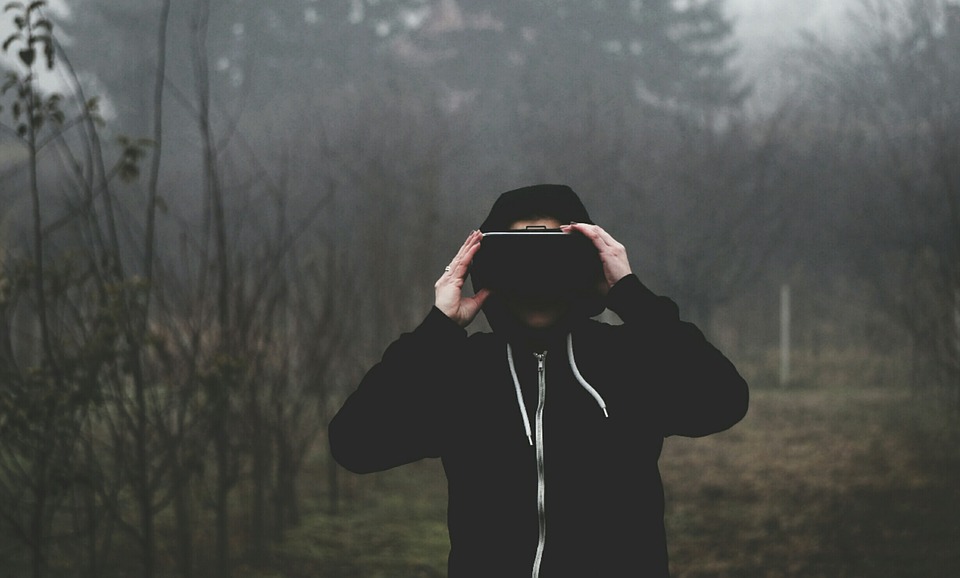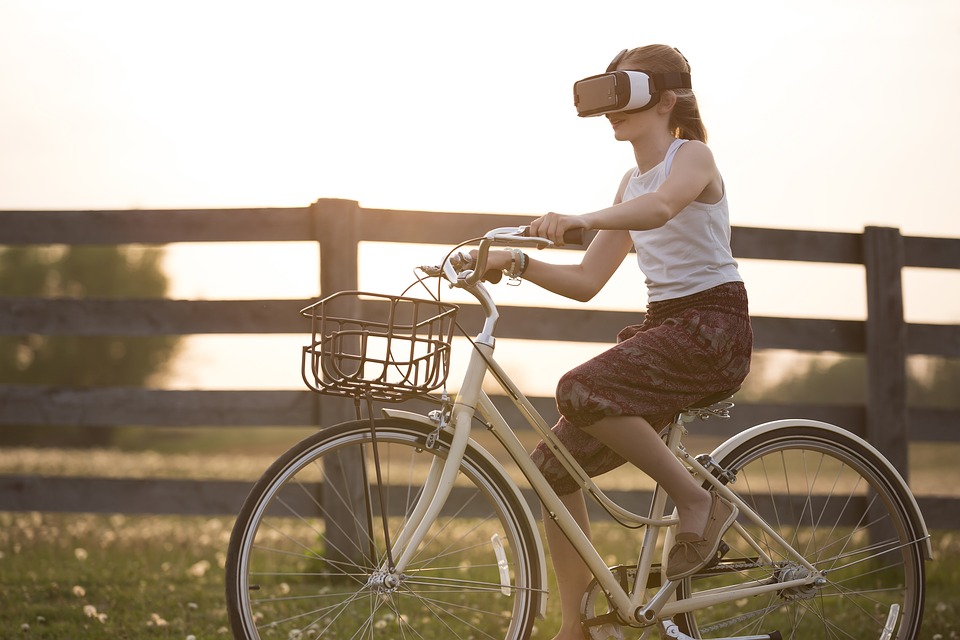First things first: virtual reality is a communication medium, not a technology.
Technologically speaking, there are three variants: virtual, augmented, and mixed. These exist on a spectrum of RL integration, or we can call it degrees of immersion.
- VR refers to full immersion, entirely computer-mediated content presented in total isolation through a headset and optional headphones (although social exists through embodied avatars). Think Fruit Ninja VR and Oculus Rooms.
- AR refers to complementary immersion — a screen projects computer-mediated information into the real world, where users can synthesize and contextualize the screen-based content. Think Pokemon Go and Google Maps.
- MR uses light, projected into the eye via mirrors (HoloLens) or prisms (Magic Leap’s rumored approach), to present content that is completely integrated into RL, even interacting with/responding to the environment and actions of the user.
The future will likely see more points of RL+CG integration and synthesis, so I refer to the medium as “MAVR” when talking about aspects that are true across all the tech.
As a communications medium, it’s important to put the technological advancements of MAVR into context: this is a tool for sharing ideas, experiences, and information. Just like paint, print, photography, and film, it has limitless uses and applications.

The early 21st century has seen the medium of video reach true saturation. We don’t even notice that we’re using it, and that’s what makes it a tool rather than a technology, or a novelty. And it’s no accident that along the path from flat screen ubiquity to the novelty of immersion (surround-screen? no screen?) is just a hop, skip, and a jump, technologically speaking. It’s just wrapping screens around your head or projecting the light directly into your eye, thereby forgoing the screen entirely. Once you know how to direct the light, it’s only a matter of where you put the projector
So here we are, back in Plato’s Cave, just seeing the silhouettes of the visual spectrum through a new medium. It’s an exciting time ripe with possibility. But understanding it and using it require us as creators to redefine our relationship to our audience, and learn some 21st century skills.
First, you have to understand experience design. There are a bunch of complicated ways to explain what that is, but I’ll put it to you the way it was put to me: Ever been to a city park? Everywhere through the park there are paths — concrete, asphalt, brick, what have you — designed to take you the scenic route. Crossing over and around those paths you see dirt tracks that cut right through the grass. Those are the user-created paths, and your job as an experience designer is to anticipate the use and put the paths where they are most useful (and beautiful — never underestimate the importance of beauty).

The second characteristic you have to understand about immersive design is framing. Though headsets limit the area you can see in any momentary gaze (just like your eyeballs do, but with a slightly smaller periphery), the “camera POV” no longer dominates. You’re surrounded, not compelled to look at a rectangle of information dictated by the director/designer. So, if you’re telling a story, the whole world is “on stage.” Very Shakespearean.
As a user, the most relevant feature of MAVR is agency. Video game designers understand this, because even though your designs only create the illusion of choice, you are rightly vilified if those choices are merely superficial masks for a golden path. But even when we’re not talking about entertainment apps, you still need to make room for the user who will co-create a personal experience. Whether you’re learning anatomy or meditating with Tron fish underwater or overcoming post traumatic stress, no one user will follow the exact same paths as any other. A whole new vocabulary of symbols, gestures, and space is being formulated to move creators beyond the limits of the frame.
Once you establish a conceptual foundation from these concepts, you can start focusing on execution. You will definitely need a computer, so building a foundation in programming, 3D modeling & animation, VFX, post-production, and 360 sound design (all rapidly evolving, complementary skill-sets), is a good start. You can try out 360 video, and experiment with cuts and transitions to move through time and space. But you may also want to make that live footage interactive, so you’ll need to learn compositing and utilize a game engine or webVR app to add those trigger points. And while we’re talking webVR, just wait until you can surf through a 3D internet (yes, it is just like Johnny Mnemonic and The Matrix … what does Keanu know that we don’t?)! Not happy with the design of the headsets, headphones, hand-held controllers, and other wearables? Look into AI, robotics, mechanical engineering, networking, human-computer interaction, product design, and software development.

Career-wise, you can take one of two VR paths: technical or conceptual. Technicians will be the ones to build the content and solve the usability problems that will evolve into the same universal saturation for immersive content that we discussed with respect to flat screen media at the beginning of this article. Concept people will be the creative directors and storytellers of the immersive age.
The immersive age is upon us, how will you shape it? NYFA has programs in Game Design, 3D Animation & VFX, VR Filmmaking, Interactive VR, and VR Game Design. Choose your path. NYFA’s workshops are the perfect learning atmosphere for those who wish to receive a deep dive into Virtual Reality. Learn more about our 8-Week Narrative VR Filmmaking Workshop and apply today!
